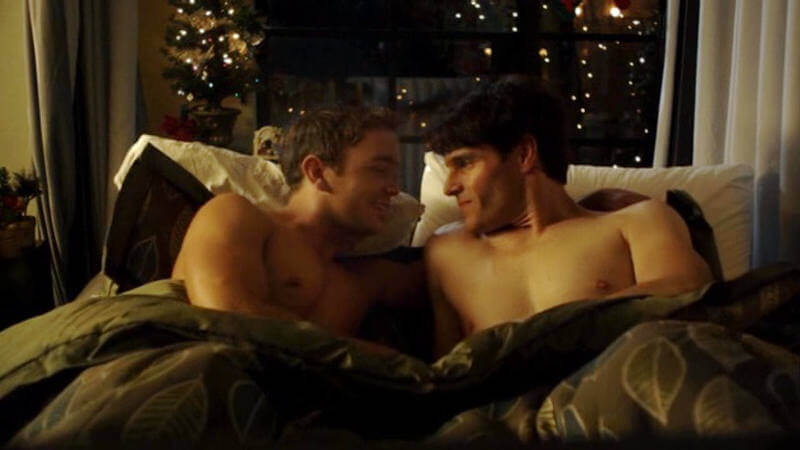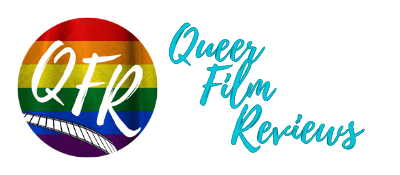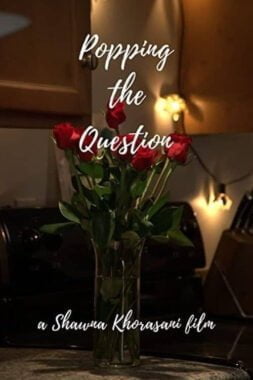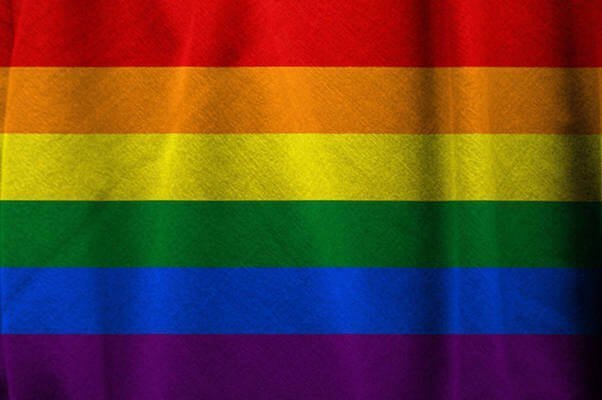A little Christmas magic causes two coworkers with contrasting lifestyles to switch sexual orientations.
Note: This movie review is one of the films in my Top 5 Queer Holiday Film 2019
What does Bruce Valencia, a magical Christmas angel tree topper, stereotypes and a case of switched identities have in common? All of these can be found in this comedy set around the Christmas holidays!

Synopsis of “Walk A Mile In My Pradas”
The basic plot involves two stereotypical guys, one straight and homophobic and the other stereotypically homosexual, and how their lives interact through a remodeling job. We first meet Tony (Nathaniel Marston), the straight, homophobic guy, we actually see him in a flashback as a kid asking his mom what “gay” means. She skirts the issue, so Tony unknowingly tells his Catholic nun teacher at school that he’s gay today! She reacts, telling him that its evil and wrong while making him write it repeatedly on the chalk board – thus setting up the root of his homophobia. This is further reinforced when we meet his stereotypical Italian father (Mike Starr) who, along with Tony, take issue with “the gays” being allowed to get married.
This completely contrasts to when we first meet Steve (Tom Archdeacon), our token homosexual who wears Prada shoes and is in a long-term relationship with his boyfriend Michael (Emrhys Cooper). Tony’s boss just landed a contract with Bruce Vilanch, through his new designer and nephew, Steve. The dichotomy between the two is made crystal clear right away and only worsens as we lead into the work Christmas party. During a scene at the party involving mistletoe, couples kissing, and bad homophobic remarks, we watch as Steve finally explodes and wishes that Tony were straight so he could see how homophobic he is. Meanwhile, Tony wishes Steve was straight so he could see how disgusting he is. But it’s only the stereotypical fat & clueless bridesmaid supporting character who sees the Christmas ornament glow at each wish.
Starting the next morning, we see an immediate change in both guys. Tony is now suddenly checking out guy’s asses, watching “Brokeback Mountain”, and fantasizing about TV ad musclemen. Steve, meanwhile is now turned on by women, watching football, and not caring about his boyfriend. Both go so far in the opposite direction of stereotypes that their lives quickly fall into disarray. Tony’s upcoming wedding on New Year’s Day is cancelled because his fiancee thinks he’s in the closet after finding him in a gay bar, meanwhile Steve’s boyfriend breaks off their relationship because of how much he has changed into a cliche heterosexual. It’s only after Tony is mugged outside a gay bar, do the two get together and reflect on how difficult the other’s lives are – only to discover that this sudden change is tied to the Christmas party and the magical Christmas angel! The rest of the film is a race of both guys trying to find the ornament and get their lives switched back so they can both be happy again.

The Good
This comedy is filled with humor and jokes galore. Many of them are actually quite good, even though a handful are cliche and only work because of the situation.
- “No one should have two fathers – one is bad enough!”
- Steve: “We met while studying abroad.” Tony: “I didn’t think you studied broads.”
- and other good, cheeky remarks.
There is also a nice blend of realness to the story; it’s not all cheer and happiness. By the time we get to Tony getting mugged, you actually start to question whether this is a drama rather than a comedy. However, some of the greatest scenes of the film are actually more dramatic, such as when Tony prays to be “normal” again – only to apologize for the negative slur in that. Steven suddenly enters and we witness a touching, heartfelt scene between Tony and Steve as they admit how bad they acted towards each other. The directing from Joey Sylvester really shines during this scene, and other similar moments, because he is able to bring life to an adequate script.
The Not-So-Good
While this a comedy that requires both lead males to act as stereotypical as possible in order for the switch to be believable, there are many “jokes” and dialogue that go way to far. We see and hear the blatant homophobia from Tony’s dad and his best man/coworker. Many of straight Tony’s (and even “straight” Steve’s) “jokes” are actually homophobic slurs – to the point that it’s easy to be disgusted at points, enough to turn off the film. This aspect alone is what forced me to knock a few of the scoring categories down a notch; the script and how it’s delivered is nothing special, and “off” at times. (An interesting aside, Bruce Vilanch, who’s an award winning comedic writer, is NOT listed as a writer on the film – perhaps if he was involved more, the script would’ve turned out better?)
And what about the “magical” Christmas ornament that’s powerful enough to grant wishes… yeah, this isn’t Harry Potter. If you removed that far-fetching element, the entire film would fall apart. There’s also a slight cliffhanger towards the end that is left out, probably in order to create an ounce of suspense, but actually just leaves the viewer confused with a lackluster finale.

Thankfully, despite all the cliche jokes, the bad stereotypical characters and more, “Walk A Mile In My Pradas” is not a complete disaster. If you’re looking for something a bit whimsical for the holiday season, then it’s certainly an interesting queer film to watch!
Queer Relevance of “Walk A Mile In My Pradas”
The queer relevance is rather obvious, given one of the two male leads is homosexual and has a male partner. Because the plot is essentially a “switching” of heterosexual and homosexual, there are many smaller elements of queer culture that are included – although some of them are a bit stereotypical. And let’s not ignore the appearance of gay comedian Bruce Vilanch!



















